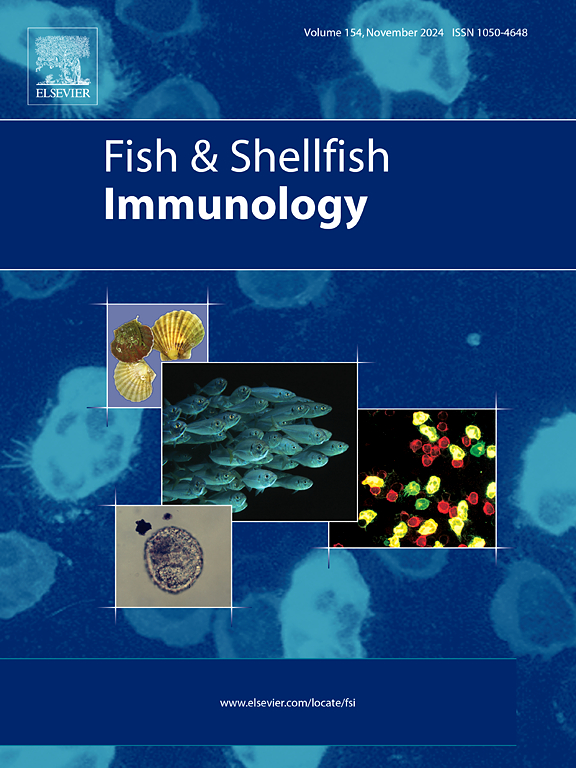Gut microbiota and functional metabolic predictions in white feces disease-infected Pacific white shrimp, Penaeus vannamei, from Indonesian farms
IF 4.1
2区 农林科学
Q1 FISHERIES
引用次数: 0
Abstract
The etiological agent of white feces disease (WFD) infecting Pacific white shrimp Penaeus vannamei in Indonesia farms remains obscure. The present study aimed to identify possible causative agents of WFD infection in Pacific white shrimps cultured in Indonesian farms. WFD-infected and healthy samples (shrimp gut and rearing water) were collected from 8 commercial shrimp farms in East Java, Indonesia followed by bacterial community profiling using HiSeq sequencing of 16S rRNA gene amplicons. The results showed that the microbiota composition in the guts of WFD-infected shrimps was significantly different (p < 0.05) from the guts of healthy shrimps in term of genus and bacterial species. The intestinal bacterial communities of WFS-infected shrimps were overrepresented by Vibrio coralliilyticus, whereas Paracoccus was underrepresented. Phylogenetic Investigation of Communities by Reconstruction of Unobserved States functional predictions indicated that relative abundances of 12 genes associated with the pathogenicity of bacteria including amino acid metabolisms, carbohydrate metabolisms, glycan biosynthesis, and xenobiotic biodegradation and metabolism were significantly (p < 0.05) higher in the gut microbiota of WFD-infected shrimps. These findings provide insights into the microbiome domination and their metabolic activities in the digestive tract of WFD-infected shrimps and suggest that V. coralliilyticus is a possible causative agent of WFD in cultured Indonesia Pacific white shrimp.
求助全文
约1分钟内获得全文
求助全文
来源期刊

Fish & shellfish immunology
农林科学-海洋与淡水生物学
CiteScore
7.50
自引率
19.10%
发文量
750
审稿时长
68 days
期刊介绍:
Fish and Shellfish Immunology rapidly publishes high-quality, peer-refereed contributions in the expanding fields of fish and shellfish immunology. It presents studies on the basic mechanisms of both the specific and non-specific defense systems, the cells, tissues, and humoral factors involved, their dependence on environmental and intrinsic factors, response to pathogens, response to vaccination, and applied studies on the development of specific vaccines for use in the aquaculture industry.
 求助内容:
求助内容: 应助结果提醒方式:
应助结果提醒方式:


